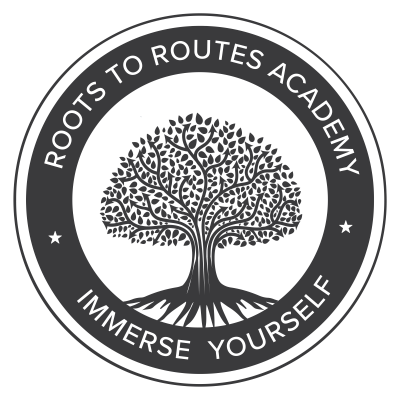Why Math is the Most Dropped Subject in Ontario (And How to Fix It)
April 21, 2025

Picture this: You’re sitting in Grade 11 math class, staring at a quadratic equation that might as well be a magic spell.
The teacher is racing through more quadratic examples, half the class is lost, and your friend whispers, “Why bother? I’m dropping this next semester.”
This scene plays out in Ontario classrooms every year, where math has become the most abandoned subject by high school students. But why? What is the cause of this Math Dropout Crisis no one’s talking about?
Reason 1: The Ontario Math Curriculum
Ontario’s math curriculum is packed with good intentions. It aims to build critical thinkers, problem-solvers, and future STEM leaders.
But somewhere between policy and practice, things get interesting. The curriculum’s shift toward abstract concepts in early grades, like introducing algebra in Grade 7, leaves many students behind, especially those without access to tutoring or parental support. By high school, the gap widens. Grade 11 math Ontario courses, like Functions or University-level Calculus, demand not just skill but stamina. Students who missed foundational concepts in fractions or equations find themselves drowning, too embarrassed to ask for help in a packed classroom.
Reason 2: The Engagement Gap in Teaching Methods
Walk into a typical Ontario math class, and you’ll see rows of students copying notes from a whiteboard. The teacher lectures, assigns problems, and moves on, whether the class gets it or not. This “chalk-and-talk” method might work for some, but for many students, it just feels irrelevant.
How does solving for “x” connect to real life? Why should a student care about trigonometry if they’ve never seen it applied outside a textbook?
The pressure to “cover the curriculum” leaves little room for creativity. Teachers juggling 35 students can’t pause to discuss how geometry shapes video game design or how statistics reveal systemic inequities. Without these connections, math becomes a chore, something to endure, not enjoy.
Reason 3: Math Anxiety, The Silent Killer
Here’s a secret: Most students don’t hate math itself.
They hate how it makes them feel confused, dumb, and ashamed. This is math anxiety, and it’s rampant in Ontario schools. A study cited by Western University’s Faculty of Education found that 60% of Grade 8 students worry about having difficulty in math, and 30% feel tense when completing math homework. For Black students, this anxiety is often compounded by stereotypes. “People assume I’m not ‘a math person’ because of how I look or where I’m from,” says an anonymous Grade 12 student in Mississauga.
Anxiety isn’t just emotional; it’s biological. Stress hormones like cortisol literally block the brain’s ability to solve problems. So when a teacher calls on a nervous student, their mind goes blank, not because they’re lazy, but because their brain is in survival mode.
Reasons 4: Systemic Barriers, Who Gets Left Behind?
Math struggles aren’t random. They’re tied to systemic issues like underfunded schools, and overcrowded classrooms. In Toronto’s priority neighborhoods, schools often lack resources like math tutors or updated textbooks.
The EQAO assessments, standardized tests meant to gauge student progress, add another layer of stress. Students already doubting their abilities crumble under timed tests, reinforcing the belief that they’re “bad at math.”
A Different Approach to Rebuilding Confidence
So, how do we fix this?
First, we need to rethink how math is taught. Instead of racing through lessons, educators could prioritize mastery over speed. Imagine a Grade 11 math Ontario class where students spend a week diving into exponential growth by analyzing social media algorithms. Suddenly, equations have context, and purpose.
Second, we must address math anxiety head-on. Techniques like mindfulness exercises before tests or “mistake-friendly” classrooms (where errors are celebrated as learning steps) can ease the fear of failure.
One program gets it right. Roots to Routes Academy, an Ontario-based academic community, flips the script on traditional math education. Our secret is focusing on the student more than the syllabus.
Take our approach to Grade 12 math Ontario courses. Instead of drilling formulas, our teachers connect calculus to real-world issues, like using derivatives to model climate change impacts.
The academy also tackles anxiety through small, supportive classes. With a 1:25 teacher-student ratio, educators spot struggles early and adapt lessons to different learning styles.
Math Doesn’t Have to Be a Nightmare
Ontario’s math dropout crisis isn’t inevitable. It’s a choice; a reflection of who we prioritize in education. By centering student needs, embracing creativity, and challenging systemic biases, we can transform math from a barrier into a bridge. Academies like Roots to Routes Academy prove it’s possible. The question is: Will we listen?
P.S: If your child is struggling with math, the Roots to Routes Academy is the solution they need. Enrol them for our summer class and save them from this scary math crisis.
![]()
Related Posts
We’re So Glad You Made It Here
We know you might still have a few questions or concerns and that’s completely okay. We’re here to listen, to support, and to make sure you have all the information you need.
If something’s on your mind, don’t hesitate to reach out. Just send us a quick message, we’re happy to help.
Once you do, a member of our team will get back to you shortly and you’ll also start receiving our free, value-packed newsletters filled with tips, resources, and insights to support your child’s learning journey.


